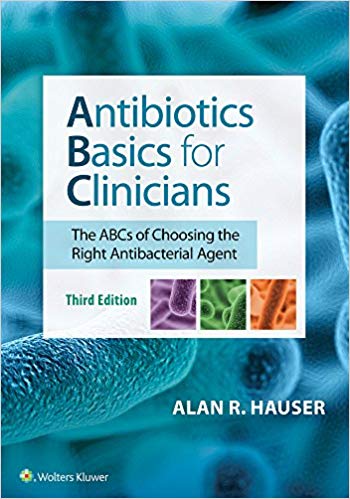At some point in their educational career, medical students need to successfully navigate the transition from microbiology and pharmacology, —i.e., bugs and drugs—to infectious diseases, that is, diagnosing and managing infectious disease syndromes and distinguishing them from their noninfectious mimics.
This transition is challenging for many for several reasons. The main one is, in my view, the fact that in clinical practice infectious diseases are often diagnosed tentatively and treated empirically. In contrast, microbiology and pharmacology are taught as if one knew the answers to everything. This creates a gulf of sorts for many learners: what do I do when I don’t know whether my patient has an infectious disease altogether, let alone what bug might be involved?
This is precisely the gap which Antibiotic Basics for Clinicians (2019) helps to bridge. The book starts out with the basic science, the microbiology and pharmacology relevant to the most important clinical pathogens. Then the book proceeds with an intelligent discussion of the important infectious diseases syndromes (e.g., meningitis, urinary tract infections, etc.), and their empiric and definitive management. The treatment of the relevant basic and clinical science is thoughtful and concise. For example, the clinical presentation of pelvic inflammatory disease goes like this:
The patient with PID typically presents with abnormal bleeding, dyspareunia, vaginal discharge, lower abdominal pain, fever, and chills. Physical examination is often remarkable for fever, abnormal cervical or vaginal mucopurulent discharge, uterine or adnexal tenderness and cervical motion tenderness. Laboratory examination may show an elevated peripheral white blood cell count….
Antibiotic Basics for Clinicians (2019)

The 2019 edition is in full color, an enhancement compared to the previous edition, which I reviewed elsewhere. That said, the graphics are still quite uninspiring. I hope that future editions will show Gram stains and other images of various critters, as well as clinical photographs. (In addition, the first order questions at the end of the chapter should probably be changed to second order questions. For example, one end-of-chapter question, in fill-in-the-blank format is, “The treatment of choice for rickettsial infections is ________.” This is too straightforward. I’d much rather see this question formulated as a case presentation pointing to a rickettsial disease: e.g., “A patient from North Carolina who spends considerable time outdoors presents in August with fever and a maculopapular rash. The rash started around his wrists and ankles and then progressed centrally to cover his trunk and distally to cover his palms and soles. Which antibiotic should be administered?”)
Antibiotic Basics for Clinicians (2019) by Alan R. Hauser MD, PhD., is still one of the best medical books—or perhaps the only medical book—of its kind. It is still worthy of canonization among the best medical books of all time. All third and forth year medical students, and most residents, should read this book.


Leave a Reply